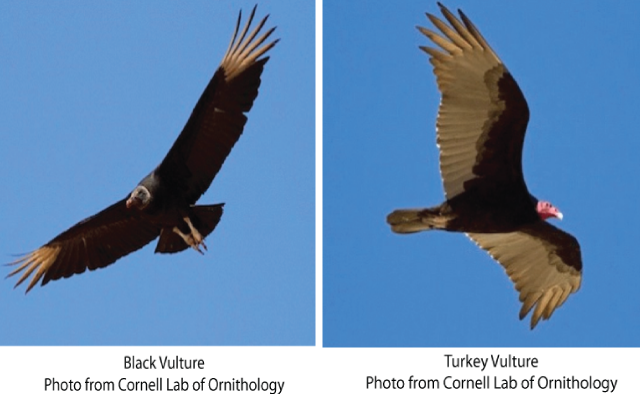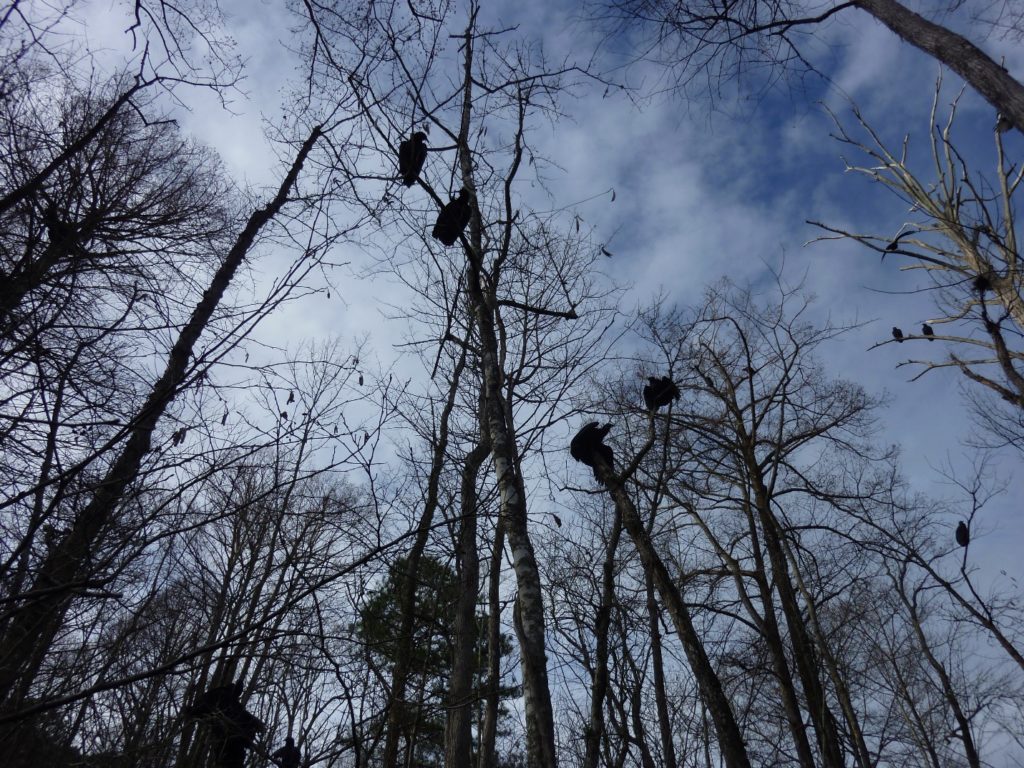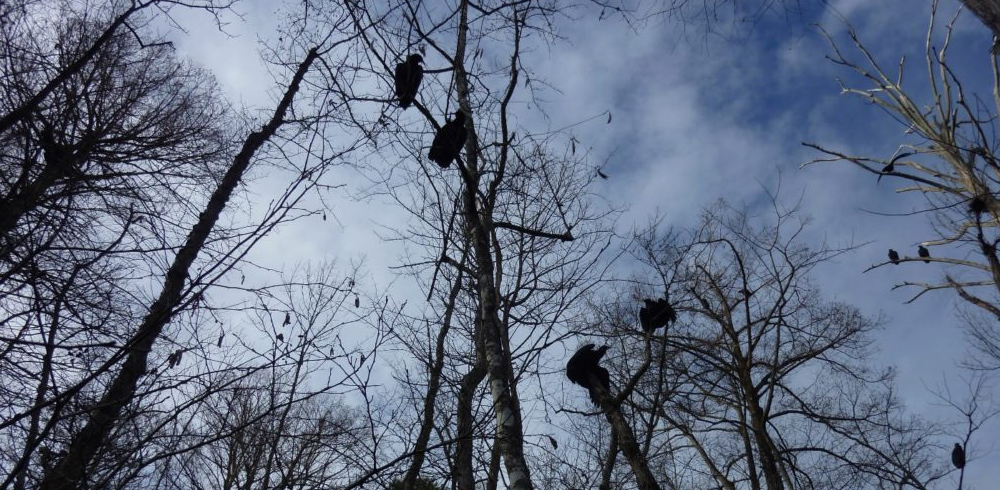In Virginia, we have two types of vultures. Coragyps atratus, Black Vultures have black heads and jet black body other than the white “star” of their wingtips. Cathartes aura, Turkey Vultures, have red heads and two-toned wings. Together, they rid our environment of carcasses which may be infected with diseases and bacteria like anthrax, cholera, plague and other things that would pose serious health risks to humans if not ingested and destroyed by vultures. Turkey Vultures and Black Vultures work together to keep humans safe.

Turkey Vultures are larger than Black Vultures and have a keen sense of smell to locate downed prey. Black Vultures on the other hand usually scout from high on top of thermal rides to visually spot carrion or to see where the Turkey Vultures are headed. Black Vultures often depend on Turkey Vultures to find carrion because Black Vultures do not have the same keen sense of smell. Recent studies have reported a significant degree of difference in food selection between Turkey Vultures and Black Vultures. The Turkey Vulture will rarely eat any meat that is more than 4 days old, whereas Black Vultures will eat just about anything, yet another example of their teamwork. This may also explain why Black Vultures can be problematic, eating windshield wipers and other soft spots on parked vehicles. This issue seems to be invariably Black Vultures and not Turkey Vultures, and we are hoping our RiverRats patrol reports may start to glean some more insight into the problem.
These are both large carnivorous, scavenger birds with a wing span of 4 to 6 feet. They are monogamous and raise an average of 2 chicks a year. They can live to be 25 years old and often stay together in family groups. They do not have typical nests, but rather scrape a spot in soil and sometimes pile scraps of wood or other vegetation, and the nests may be used repeatedly for a decade or more. The protection comes from either parent in attendance or sometimes none when they are both out feeding. Predators intruding on the nest are discouraged by a regurgitated and very “ripe” digestive glob. The birds both defecate and urinate on their legs as a way to help keep otherwise bare legs cool and free of disease.
Vultures provide an absolutely essential service for humans, but can be a nuisance. This is one of the major wildlife-conflict issues in the James River Watershed. Black Vultures, in addition to eating windshield wipers in parking lots, have been known to attack and sometimes kill new born calves, sheep and other livestock. The other commonly cited cost of these birds is the increasing reports of strikes of small commercial aircraft. The reported costs are in the millions for grounded planes that would otherwise be flying customers. But this is a small price to pay for the health protection that these birds provide.These examples of human-wildlife conflict add to the cultural perception that vultures are harmful and disgusting, despite their absolutely essential ecological role in maintaining human health and well-being. Next time you see vultures, take a moment to say THANKS!
Vultures in Virginia are a protected non-game species and they are federally protected under the Migratory Bird Act. It is illegal to use lethal force on vultures without necessary permits. Any unauthorized killing can be met with a $5,000 fine and/or 6 months in jail.
In Virginia it is illegal to:
- molest or destroy a vulture nest and/or eggs. §29.1-521.
- trap any vulture §29.1-530 kill a vulture anytime. §29.1-100,§29.1-513
- poison any animal (including vulture) on your property. 4VAC15-40-50
It is a Federal offense to:
- possess, sell, deliver, carry, transport, or ship any vulture or vulture part since they are classified as a migratory species. (Migratory Bird Treaty Act)

Black Vultures roost on Powhatan Creek, December 2016. Photo by Bill Whittaker
Thanks to Bill Whittaker for assisting in researching and writing this post!
-
https://www.allaboutbirds.org/guide/
https://www.peregrinefund.org/explore-raptors-species/
http://www.desertusa.com/birds/turkey-vulture.html
http://humanwildlife.cmi.vt.edu/Species/Vulture.htm
http://wildlifecenter.org/vulture-facts

